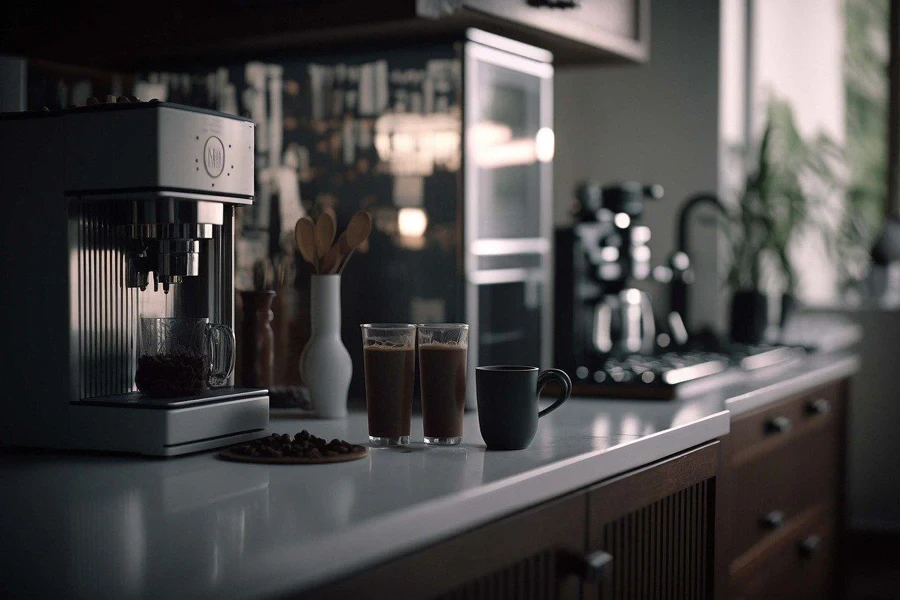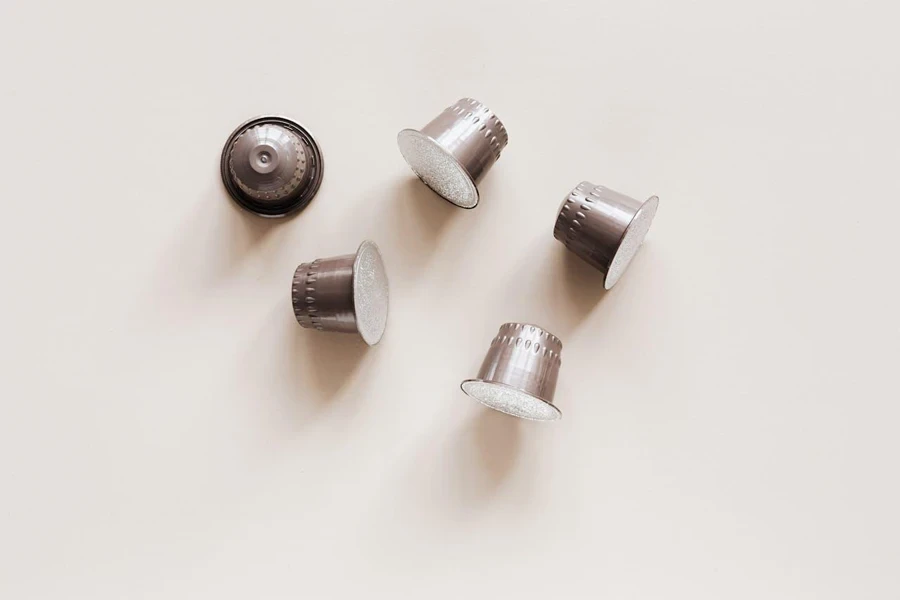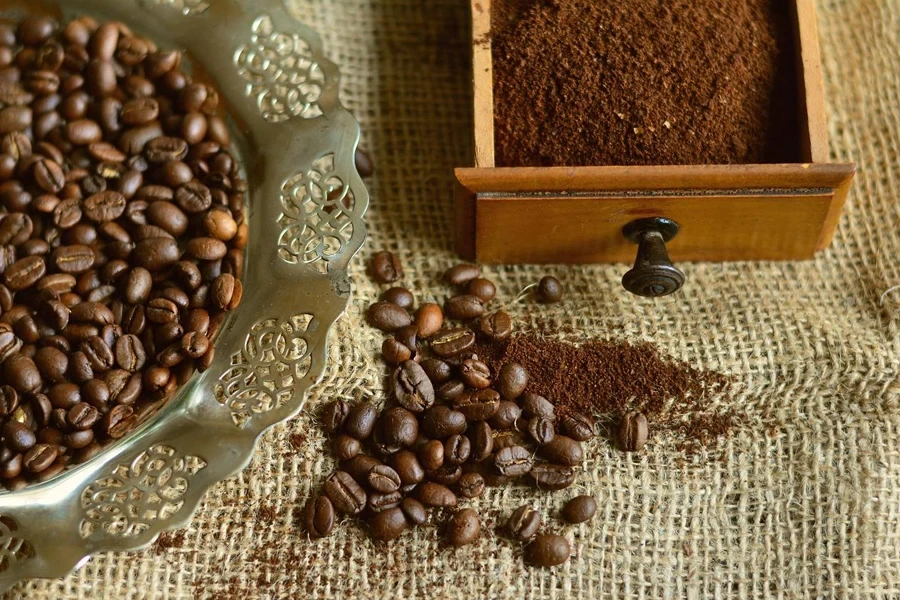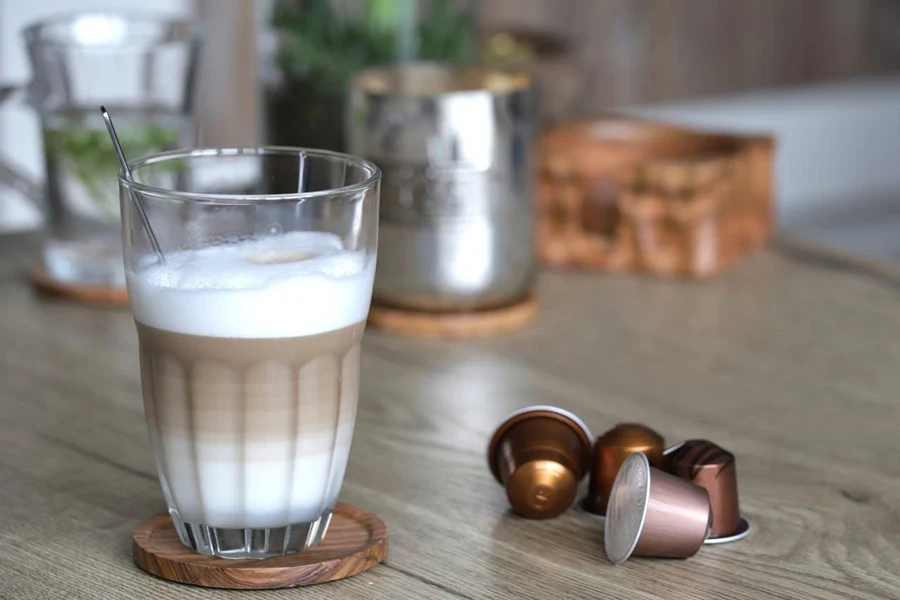“Coffee, tea or me?” was an old joke in the airline industry, popularized by a book bearing the same title in 1967, which humorously portrayed the lives of two fictional airline stewardesses. Interestingly, it also unwittingly captured the rising demand for coffee, a drink that often comes to mind first when considering a beverage. This is reflected in a recent statistic which showed that coffee achieved a whopping 16.4 million global search volume, surpassing other popular beverages like wine and tea. In fact, it’s also reported to be the second most consumed beverage in the world, after water.
With such widespread popularity and the rise of freelance work that often commands a quick caffeine fix between remote meetings and tasks at home, it’s no wonder that single-serve coffee makers, offering the convenience of brewing one cup at a time with minimal setup, seem particularly appealing right now.
Read on to discover what really makes a single-serve coffee maker special, how to choose the right one, and explore the widely available options for single-cup coffee makers in today’s market.
Table of Contents
1. Overview of single-serve coffee makers
2. How to choose the right single-serve coffee maker
3. Types of single-serve coffee makers
4. Brewing a fresh opportunity
Overview of single-serve coffee makers

What is a single-serve coffee maker

A single-serve coffee maker is a type of coffee machine specifically designed to brew one cup of coffee at a time. Often also known as a one-cup coffee maker or single coffee maker, it’s basically an electronic device that simplifies the coffee-making process for those who prefer to enjoy a single cup of coffee at a time, without the need to brew an entire pot. In other words, this type of coffee machine offers convenience and speed, while also reducing waste since only one cup is brewed per use.
The biggest difference between a single-serve coffee maker and traditional coffee machines is that while traditional machines typically use ground coffee or whole beans, single-serve coffee makers generally rely on coffee pods or capsules. However, some hybrid machines or models also allow users to brew with ground coffee, providing them with a custom-brew option.
Since pod/capsule-based single-serve coffee makers come with pre-measured portions, they ensure consistent flavor and are hence easier to operate, clean, and maintain. At the same time, the one-cup functionality means that these machines typically come with compact design and space-efficient, as they don’t need to accommodate large brewing capacities. Their modern and sleek designs therefore serve as another aesthetic advantage.
Why single-serve coffee maker

From a seller’s standpoint, there are two main perspectives to consider when evaluating the business potential of single-serve coffee makers. First and foremost, multiple studies forecast a promising future for the global single-serve coffee maker market. The total market value is projected to grow from approximately USD $836.5 million in 2024 to USD $1.69 billion by 2034, with an impressive compound annual growth rate (CAGR) expected to reach 7.3% during this period (2024–2034). Beyond the obvious benefits of convenience and portion control, the increasing demand for quick caffeine fixes and the rising popularity of specialty and gourmet coffee are among the reasons cited by these reports as significant catalysts that drive such robust growth.

Another angle sellers should consider is the potential business opportunity to sell or bundle single-serve coffee makers together with the applicable coffee pods or capsules. These consumables can indeed work as a diversified and long-term revenue stream for any consumer electronics business too. In a way, this approach mirrors the loyalty-driven razor-and-blade model, where sellers can profit not only from the initial machine sales but also from the continuous sales of coffee pods or capsules, even after the one-time sale of coffee makers.
In order to maximize market reach and growth, sellers can consider offering coffee pods or capsules that cater to both proprietary and generic single-serve coffee makers. Simultaneously, it’s essential to recognize that since this approach shares similarities with the razor-and-blade model, the primary advantage for such a model often lies with manufacturers rather than retailers. This is because the control over the pricing of subsequent pods and capsules typically remains in the hands of manufacturers. In any case, for sellers looking to diversify income streams and build long-term relationships with customers, this strategy can still serve as a valuable business opportunity.
How to choose the right single-serve coffee maker
Choosing the right single-serve coffee maker for selling involves considerations that are more or less similar to those of users, though certain business-specific priorities should be emphasized. For instance, sellers should focus on the durability and build quality of the coffee maker, particularly if they plan to offer recurring sales of related pods or capsules. This ensures a long-term, sustainable, and profitable business model.
By the same extension, sellers should also assess the compatibility of the machine with different pods or capsules, especially if they intend to offer a bundle of consumables or capitalize on recurring pod sales. Meanwhile, since proprietary pods or capsules often come with higher price points, sellers must also bear this in mind, as some users may prefer options that minimize long-term expenses. For sellers, another essential factor when selecting a coffee maker is the water reservoir capacity. This not only impacts user convenience but also directly influences the overall size and cost of the machine.

Simultaneously, Sellers should also consider the machine from the user’s point of view. At the very least, the coffee maker should include user-friendly features to attract customers. The machines should prioritize ease of use, featuring an intuitive interface and simple setup. The machine must also brew coffee quickly, with an average brew time of less than two minutes for a standard 8-ounce (227 ml) cup.
Finally, sellers might also consider offering more advanced coffee makers with additional features like customizable brew settings, including coffee strength, cup size, and temperature options. Machines with specific latte or cappuccino buttons can be appealing, particularly for consumers seeking a more comprehensive coffee-making experience. Alternatively, a single-cup coffee maker with a milk frother, but without dedicated buttons for lattes or cappuccinos, may also offer the equivalent coffeehouse-style experience but at a lower price tag.
Types of single-serve coffee makers
Pod-based/capsule-based single-serve coffee makers

To many, coffee pods and coffee capsules are synonymous with single-cup coffee makers. In fact, these products are indeed the cornerstone of single-serve coffee makers. Their invention singlehandedly promoted the popularity and widespread use of these coffee machines.
Nevertheless, while often used interchangeably, the terms “coffee pods” and “coffee capsules” actually refer to two completely different products.
Historically, coffee pods are the earliest form of commercially available single-serve coffee options. These pods look like and function like tea bags and must be used in specific single-serve pod coffee makers, which are equipped with pod filters instead of single-serve capsule coffee makers.
The only similarity between the two coffee formats is in terms of coffee content—both typically contain around 7 grams of coffee, though some capsules may contain as little as 5 grams. Other than that, from cost and build to flavor options and brewing mechanisms, pods and capsules are made from completely different materials and therefore vary in costs, brewing methods, and flavor availability.
In general, due to the brewing mechanisms involved, coffee pods produce a milder and less intense brew compared to capsules, as they rely on lower pressure during the brewing process, which is more akin to drip coffee makers or traditional filter systems. This results in a gentler extraction process. Conversely, coffee capsules, with their high-pressure brewing system, often produce a stronger, espresso-like coffee. As a result, coffee pods tend to be cheaper than coffee capsules and are also more environmentally friendly, as they are usually made of biodegradable filter paper in soft, round pouches. Coffee capsules, on the other hand, are typically made from more durable materials such as plastic or aluminum, making them more expensive and potentially more harmful to the environment.
The good news for all sellers is that while popular coffee capsules from pioneering brands like Nespresso and Keurig used to be proprietary designs, since the expiration of their patent protections in the early 2010s, many K-Cups pods and coffee capsules are now widely available as compatible alternatives, including some Italian coffee capsules that are generic replacements for use on Nespresso machines or other generic capsule coffee makers.
Hybrid or ground coffee single-serve coffee makers

Hybrid versions of single-serve coffee brewers are purpose-built for coffee aficionados or connoisseurs who appreciate the fresh, natural taste of ground coffee or know how to maximize its flavor for a cup of truly good coffee. The nature of these hybrid machines makes them versatile enough to handle both coffee capsule systems, accommodating both K-cup-like capsules as well as any standard ground coffee varieties.
While these hybrid machines offer versatility, they also highlight the appeal of using ground coffee for a more customized brew. That’s why ground coffee single-serve coffee makers, which normally function similarly to traditional drip coffee machines but are designed to brew only one cup at a time, have their own group of loyalists as well. These single-serve ground coffee makers basically provide users with more control over the grind size and flavor to craft a perfect cup each time.
In a nutshell, whether it’s a hybrid single-serve brewer or a single-cup coffee maker with no pods but uses only ground coffee, the main selling point for these machines is the ability to tailor the brew quality to personal preferences, which is different from the convenience and uniformity with coffee capsules or pods but simply offers more flexibility.
Multi-functional single-serve coffee makers

Aside from the two main types of single-serve coffee makers explained above, more and more innovative and high-tech one-cup coffee machines are available on the market now, featuring creative and practical additions designed to further enrich the coffee-brewing experience even at home or in small office settings.
Overall, advanced technologies nowadays not only allow for lighter, smaller, and more compact small one-cup coffee makers but also enable the development of portable single-cup coffee makers that allow for on-the-go use. Similarly, these technologies have led to the rise of programmable single-serve coffee makers, which offer complex customization options, including scheduling, brew strength, temperature control, and the ability to choose different sizes for cups.
At the same time, smart single-cup coffee makers further integrate technological possibilities with various smart home systems, catering to those who seek even more ease in life. Through Wi-Fi and app connectivity, these smart single-serve coffee makers allow for remote coffee brewing, offering options like voice control and app control. Updates and maintenance for these machines also become incredibly convenient and virtually manageable from any smartphone.
Brewing a fresh opportunity

Stepping into the 2020s, in light of the disruptions in the health industry over the past few years and the growth of the WFH (work-from-home) trend, many people have transitioned to spending more time at home. Consequently, there are now more demands for household electronics that were once deemed less essential. Single-serve coffee makers are one such prime example, with pod-based and capsule-based single-cup coffee machines gaining unprecedented popularity according to multiple global reports.
When evaluating single-serve coffee makers for sales, key considerations for sellers include durability and build quality, pod and capsule compatibility, water reservoir capacity, and user-friendly features such as brewing speed and advanced customization options. Although coffee machines have been around for decades, single-serve coffee makers are a relatively new invention that has only gained significant momentum since the early 2000s. The rise of hybrid single-serve coffee makers, ground coffee one-cup machines, and tech-savvy models further expands the single-serve coffee machine market. As a result, sellers can view these new innovations as a fresh opportunity to tap into a rapidly growing market.
For more insights on wholesale sourcing ideas and logistics updates, visit Alibaba.com Reads. Stay up to date with the best tips and strategies by bookmarking Alibaba.com Reads as your favorite resource for all the updates that matter to your business!



